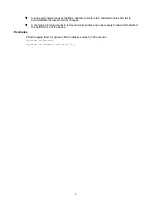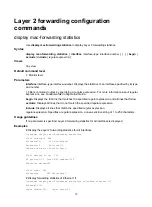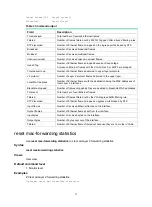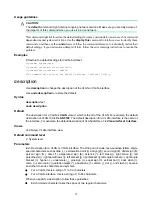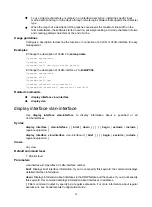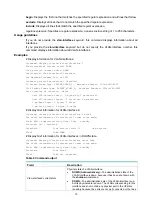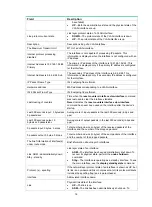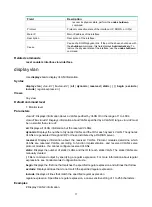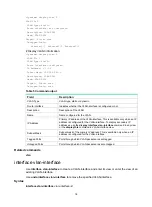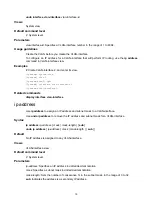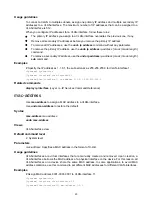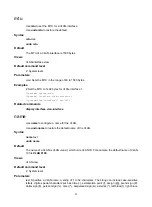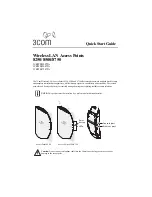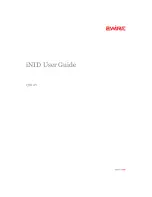
13
Usage guidelines
CAUTION:
The
default
command might interrupt ongoing network services. Make sure you are fully aware of
the impacts of this command when you use it in a live network.
This command might fail to restore the default settings for some commands for reasons such as command
dependencies and system restrictions. Use the
display this
command in interface view to identify these
commands, and then use their
undo
forms or follow the command reference to individually restore their
default settings. If your restoration attempt still fails, follow the error message instructions to resolve the
problem.
Examples
# Restore the default settings for VLAN-interface 1.
<Sysname> system-view
[Sysname] interface vlan-interface 1
[Sysname-Vlan-interface1] default
This command will restore the default settings. Continue? [Y/N]:y
description
Use
description
to change the description of the VLAN or VLAN-interface.
Use
undo description
to restore the default.
Syntax
description text
undo description
Default
The description for a VLAN is
VLAN
vlan-id
, which is the ID of the VLAN. For example, the default
description of VLAN 100 is
VLAN 0100
. The default description for a VLAN-interface is the name of
the interface. For example, the default description of VLAN-interface 1 is
Vlan-interface1 Interface
.
Views
VLAN view, VLAN-interface view
Default command level
2: System level
Parameters
text
: Description for a VLAN or VLAN-interface. The string can include case-sensitive letters, digits,
special characters such as tilde (~), exclamation point (!), at sign (@), pound sign (#), dollar sign ($),
percent sign (%), caret (^), ampersand sign (&), asterisk (*), left brace({), right brace (}), left
parenthesis ((), right parenthesis ()), left bracket ([), right bracket (]), left angle bracket (<), right angle
bracket (>), hyphen (-), underscore(_), plus sign (+), equal sign (=), vertical bar (|), back slash (\),
colon (:), semi-colon (;) quotation marks ("), apostrophe ('), comma (,), dot (.), and slash (/), spaces,
and other Unicode characters and symbols.
•
For a VLAN, this is a string of 1 to 32 characters.
•
For a VLAN-interface, this is a string of 1 to 80 characters.
When you specify a description, follow these guidelines:
•
Each Unicode character takes the space of two regular characters.











